In a complaint filed May 26 in U.S. District Court, the owner of nearly 100 acres of coastal, agricultural land on Oʻahu’s North Shore alleged that the City & County of Honolulu violated his companies’ due process rights by stymieing efforts to build farm dwellings and to subdivide lands within a condominium property regime he created a decade ago.
Among other things, Jeremiah Henderson III — through his companies Makai Ranch, LLC; Marconi Farms, LLC; MP Unit 21, LLC; and RCA Trade Center, Inc. — argues that the city Department of Planning and Permitting gave assurances early on that a handful of farm dwellings could be built without Special Management Area permits. Yet, according to the lawsuit and the city’s permitting website, building permit applications for new farm dwellings have either been held in limbo or rejected.
Henderson’s attorneys have pointed out that the department’s current insistence on a Special Management Area review for the agricultural subdivision project is at odds with past positions the agency took with respect to his property and that of others.
But rather than being due to a more careful approach toward development within the Special Management Area, the city’s about-face, Henderson alleges, is due to corruption within the DPP.
Henderson claims that one of his companies, Makai Ranch, has invested nearly $17 million in “pursuing, planning, designing, and constructing the infrastructure necessary to support anticipated uses of the property, plus additional expenses for the planning, designing, and constructing other agriculture and infrastructure improvements.”
Having incurred those costs, he claims Makai Ranch has vested constitutional rights to building permits, roadway consolidation and re-subdivision, and agricultural consolidation and re-subdivision. He also claims that his companies and their successors also have vested constitutional rights to construct farm dwellings, agricultural buildings and other agricultural structures and infrastructure “and to otherwise use the property for agricultural purposes without an SMA Permit,” the complaint states.
In addition to seeking declaratory and injunctive relief, Henderson is seeking attorneys’ fees, damages and compensation for the taking of his companies’ real property interests.
The city has until the end of this month to respond to the complaint. Exhibits filed as part of the complaint provide some insight into the city’s position with regard to whether or not SMA permits would be needed for the improvements he has proposed.
In a January 21, 2022, letter to one of Henderson’s attorneys, Greg Kugle, then-DPP director Dean Uchida responded to their assertion that the DPP was required to approve the proposed subdivision, which would consolidate and subdivide the land into four lots of roughly 20 to 23 acres each.
Uchida wrote, “Recent site inspections by DPP building inspectors identified multiple new structures in the panhandle area to the east of the Turtle Bay golf course, constructed without building permits.
“As the entire property is in a Special Management Area, these unpermitted structures, as well as any existing, proposed, or planned structures, and improvements to the property, which constitute a larger project, are subject to SMA review and permitting. The DPP will not allow the development of the property to continue in the pattern of segmenting into individual, unrelated projects, which has occurred thus far.”
SMA-Exempt?
According to a Honolulu Advertiser article by Andrew Gomes, Florida-based J. Henderson Co., purchased the land in 2005 for $2 million with plans to subdivide it into an agricultural subdivision with house lots. But by November 2009, the company was offering it for sale via sealed bid. The company had listed it for sale earlier in the year for $15 million.
The property ended up remaining with the Henderson-related company Makai Ranch, which eventually established an agricultural condominium property regime — Marconi Point Condominiums — consisting of 32 units in 2013.
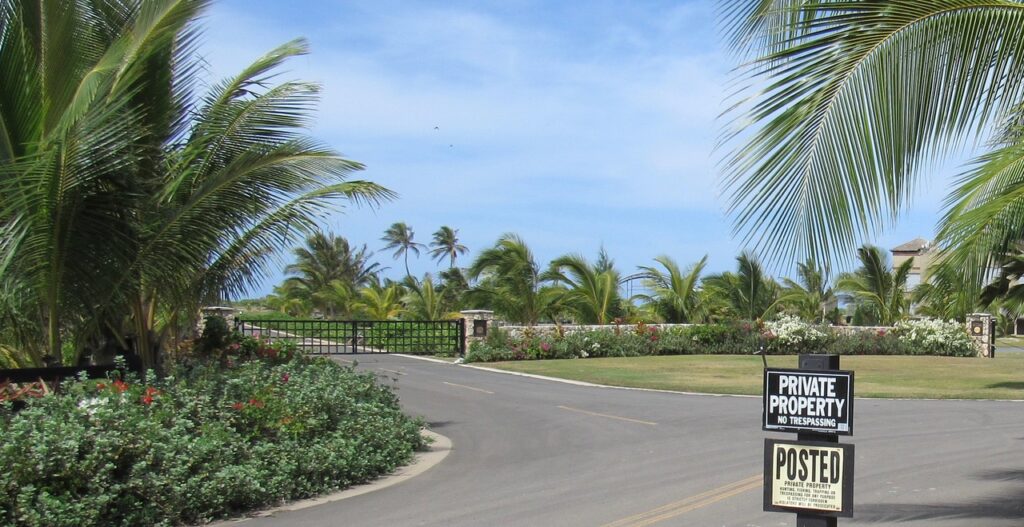
Over the years since then, 15 units covering about 58 acres have been sold to various buyers for a total of around $11 million. The remaining units remain with Makai Ranch or have been conveyed to Marconi Farms, MP Unit 21, or RCA Trade Center.
Over the last decade, various unit owners have applied for building permits for new farm dwellings. None of them has yet been permitted to build one.
In the meantime, some unit owners have erected very house-like structures — some on CPR units where farm dwellings are not allowed — but violation cases against them were closed after they submitted declarations that the buildings were simply agricultural structures (i.e., a barn or storage shed). One violation case where a farm dwelling is allowed remains open. (See our November 2022 article on this)
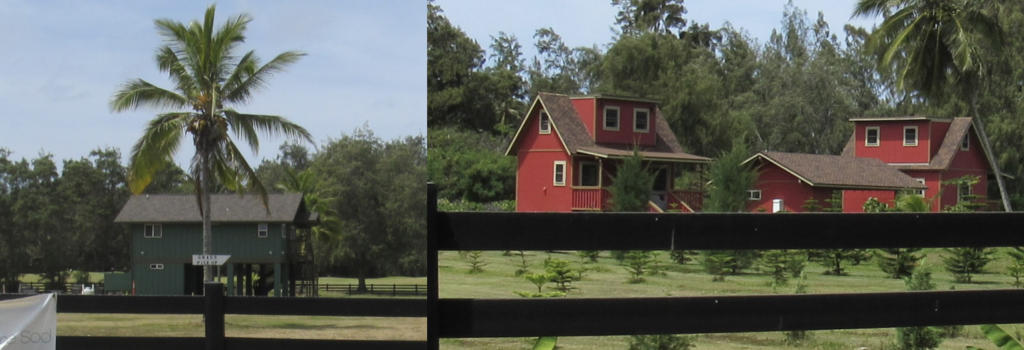
Before offering units for sale, an architect for Makai Ranch, Gregory Quinn, inquired with the DPP about the number of farm dwellings that would be allowed on one of the larger parcels within the CPR, Lot E.
Lot E contains four old and mostly derelict structures that were part of the Marconi Wireless Telegraphy Station complex, which is listed on the state and national historic registers.
On May 8, 2014, then-DPP director George Atta informed Quinn that the old structures that were likely built in 1914 did not affect the right to build a farm dwelling on the 20.52-acre parcel.
Atta stated that the city ordinance 25-1.3(2)(A) exempted a single-family residence from the need to obtain an SMA permit if the floor area was less than 7,500 square feet. But each farm dwelling and any accessory uses had to be contained within 5,000 square feet, he added.
“[T]he processing of a building permit for a farm dwelling is permitted on the site, provided that all LUO [Land Use Ordinance] and other development standards are met,” Atta wrote.
That apparently did not mean that building permits would necessarily be approved for the site without undergoing an SMA review. On October 6, 2016, the DPP created an advisory for the entire CPR area that stated that the department’s residential examiner would review building permits for Land Use Ordinance compliance “and if SMA is triggered or not.” If the reviewer determined that a special use permit or SMA permit was required, then the building permit application would be routed to the Zoning Plan Review Branch to determine whether a special use permit and/or a special management area permit were required.
The DPP issued the advisory a few months after receiving applications from the owners of Units 8 and 11 for farm dwellings.
According to the complaint, “The owner of Unit 8 began to experience problems with the permitting delays and began the process of asserting a legal claim against Makai Ranch.”
The DPP’s website notes that the agency is still awaiting the submission of agricultural development plans for both units.
“To mitigate the owners’ damages, Makai Ranch hired architect and third party reviewer William Wong (and/or his firms Jenken Pacific Inc., and/or Asia Pacific Consultants, LLC) to facilitate expedited processing of the Unit 8 applications,” the complaint states. And here, Henderson alleges, things went sideways.
Pay to Play?
On March 29, 2017, an employee of Wong’s, Jackson Lee, emailed Unit 8 owner Mary Breen that the city wanted an archaeological inventory survey (AIS) for the area to be conducted before it would issue a permit.
Makai Ranch informed Lee that an AIS had already been done for the entire property.
The complaint alleges that Wong and Lee refused to accept the state Historic Preservation Division’s approval of the prior AIS, claiming that additional approvals from the agency’s archaeology section were still required.
“Wong was intentionally delaying and interfering with the processing of the Breen permits in an attempt to force Makai Ranch to pay additional consulting fees for an unnecessary AIS,” the complaint states. This, despite the DPP confirming on April 17, 2017, that the SHPD review, part of the permitting process, was complete.
A little more than a week later, on April 28, the DPP added a note to the permit file that an agricultural site development plan was required before further processing. This same requirement was also imposed on the building permit application for Unit 11.
Then on May 2, 2017, “without authorization from Makai Ranch or Breen, Wong sent a letter to DPP stating, ‘Please cancel the permit application immediately.’”
The complaint argues that an agricultural site development plan is only required when six farm dwellings are going to be built on an oversized lot. In this case, only two farm dwellings were being proposed for Lot E, one on Unit 8 and one on Unit 11.
On May 23 of that year, Henderson sent a letter to the DPP asking it to approve the farm dwelling permits for those units.
The July 6 reply by then-acting DPP director Kathy Sokugawa indicates that the agency was taking a broader view of development within the CPR.
Sokugawa pointed out that, in responding to a consolidation/subdivision application submitted in March to widen Marconi Road, her department had already informed Henderson that the development of the agricultural CPR units could not occur “piecemeal or incrementally.” Rather, the entire project had to first comply with the city’s subdivision rules and regulations, as well as the city’s subdivision ordinance.
“This,” she continued, “will not only ensure an orderly development of the land, and the provision of adequate utilities and roads to serve the residents’ needs, but will also ensure the properties provide feasible agricultural use to purchasers or tenants, and that covenants and restrictions will be in place to maintain the properties in agricultural use. In addition, the entire development must be evaluated for SMA, or shoreline compliance, and whether it will have a significant environmental or ecological effect on coastal resources.
“Accordingly, until a subdivision approval has been obtained and SMA compliance has been determined, the DPP will withhold permits to move or construct any buildings and install any appurtenant utilities within the boundaries of the agricultural condominium, except as provided by state law.”
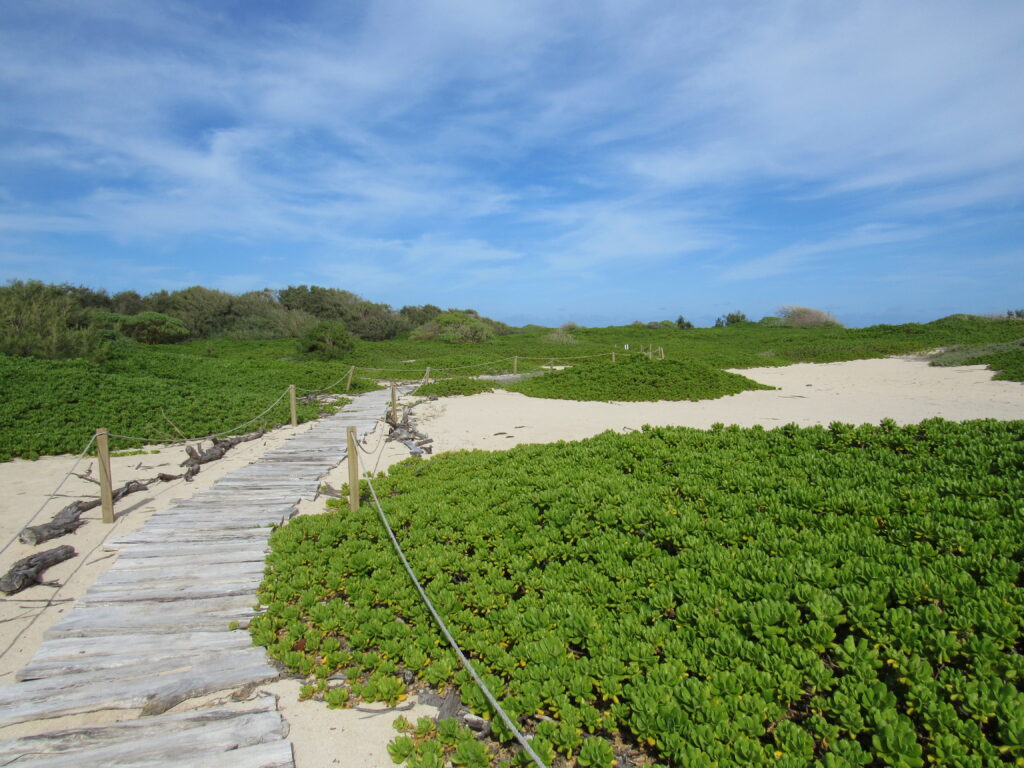
In an August 25, 2017, reply, Makai Ranch’s attorneys Kugle and Loren Seehase argued that the state Coastal Zone Management Act, as well as the city’s ordinances implementing that act, exempted several actions from the definition of development, including the construction of single-family residences under 7,500 square feet that are not part of a larger development; repair and maintenance of roads with existing rights-of-way; the subdivision of land into parcels larger than 20 acres; the creation of land rights; and the use of any land for “cultivating, planting, growing, and harvesting plants, crops, trees, and other agricultural, horticultural or forestry products or animal husbandry, or aquaculture or mariculture of plants or animals, or other agricultural purposes.”
The CZM act, however, also states that “whenever the authority finds that any excluded use, activity, or operation may have a cumulative impact, or a significant environmental or ecological effect on a special management area, that use, activity, or operation shall be defined as ‘development.’” The city’s ordinances contain similar language.
In deferring Makai Ranch’s roadway subdivision application, the DPP explained it had based its determination that a larger development was planned for the Marconi properties on the company’s prior correspondence, a public report, and the building permit applications.
Even so, the complaint blames the DPP’s position exclusively on corruption. In 2021, Wong pleaded guilty to bribing DPP employees (he’s expected to be sentenced this month), and at least one former DPP employee involved in the permitting at Marconi Point, Kanani Padeken, pleaded guilty to accepting bribes.
“Plaintiffs believe that, when Makai Ranch declined to pay additional consulting fees to Wong or his affiliates for a new AIS, Wong contact Calvert Hung, Kanani Padeken, or some other employee at DPP, with whom Wong had a relationship, to cause DPP to stop, delay, or otherwise impede the processing of the Breen permit applications. Plaintiff believes this intentional delay was just one of many instances of the corrupt ‘pay to play’ system that has been widely publicized in the news media as plaguing DPP,” the complaint continues.
The complaint then lists dozens of building permit applications associated with the CPR that have been affected or potentially affected by the DPP’s moratorium. It includes the farm dwelling applications, as well as permit applications filed by Makai Ranch to pour foundations for eight buildings.
The complaint also alleges that the moratorium was a regulatory taking of Makai Ranch’s property rights.
“In addition, the DPP defendants imposed different requirements on Makai Ranch than similarly situated agricultural condominiums, violating Makai Ranch’s equal protection rights. Once such example is the Waialee condominium project located near Kawela Bay, which like the [Marconi] property, is located within the SMA, and contains several zoning lots and multiple condominium units with five farm dwellings,” it states.
Agricultural Subdivision
Despite the arguments that the proposed buildings and roadway improvements were not part of a larger development that was subject to SMA regulations, the city held firm on its position when Makai Ranch submitted an application on February 14, 2020, to subdivide its 96 acres into four 20- to 23-acre agricultural lots with roadways.
In an April 24, 2020, deferral letter, the DPP listed 14 conditions that would need to be satisfied before it would act on the application. They included consultation with the agency’s Land Use Permits Division regarding the project’s compliance with the city’s SMA ordinances, since the division had already taken the position that the cumulative impact of the proposed improvements, “all of which is or may become part of a larger project, may have a significant environmental or ecological effect, and therefore, is ‘development.’”
They also included evidence of compliance with requirements from the state Department of Health Wastewater Branch, Honolulu Board of Water Supply, Civil Engineering Branch, as well as receipt of comments from the state Department of Agriculture and the Department of Land and Natural Resources’ Historic Preservation Division.
More than a month earlier, on March 5, the DPP asked SHPD to comment on the application. SHPD’s April 20 reply noted that the U.S. Department of Agriculture had initiated a National Historic Preservation Act, Section 106 consultation that month on the proposed construction of eight single-story agricultural structures, parking, turnarounds, and landscaping within the Marconi Wireless Telegraphy Historic District. The USDA had determined that the project would have an adverse impact on the site. (The USDA review was triggered by a loan Makai Ranch received to develop the agricultural structures.)
“The USDA has indicated that while construction has started on 3 of the 8 proposed buildings, all ground disturbing work is pending completion of Section 106 consultation,” SHPD wrote. A draft Memorandum of Agreement was under SHPD review and Section 106 consultation was ongoing at the time.
Given that, SHPD administrator Alan Downer requested that the DPP postpone Makai Ranch’s consolidation and resubdivision request “until the Memorandum of Agreement to address adverse effects to history properties has been completed and executed.”
That MOA with Makai Ranch was not completed until August 2, 2021.
Automatic Approval
Given SHPD’s request, the DPP supplemented its April 24 deferral letter on May 8, adding compliance with the division’s requirements to the list and clarifying that the deferral would expire on July 23, 2020, which was 90 days after the initial deferral.
If Makai Ranch failed to submit a written deferral extension request before the deadline, the subdivision application would expire and need to be resubmitted. The ranch did end up requesting an extension, and on July 10, the DPP granted it, noting that the application would expire on January 23, 2021, if all requirements were not met by then.
On August 27, 2020, Kugle wrote to Sokugawa, again protesting the SMA requirement. He noted that in a 2008 subdivision application deferral letter to the owners of land adjacent to Makai Ranch’s property, the DPP stated that that subdivision was exempt from SMA permit requirements because the proposed lots were greater than 20 acres in size.
“[T]here was no ‘cumulative impact’ or ‘significant effect’ determination. Makai Ranch is likewise SMA exempt,” he wrote.
Kugle also addressed some of the other requirements of the deferral. Paul Matsuda, principal of the consulting firm G70, responded to the remaining ones in an August 28 letter to the DPP, requesting approval of the project’s preliminary subdivision map.
After the DPP went months without responding, Kugle wrote to then-DPP director Uchida on January 22, a day before the application was to expire.
Kugle argued that because the department had not responded to the August letters from him and G70 within 30 days, automatic approval of the preliminary map was required.
The city’s subdivision Rule 2-202(b) states, “The director shall act on the preliminary map with [sic] 30 days after filing.” Another section of the rules adds that a deferral by the director “means that the preliminary map requires further consideration, study or consultation, or additional reports or data are required from the subdivider, or minor changes … are required.”
The rules allow for an initial 90-day deferral plus a single six-month extension, if requested. Failure to receive tentative approval by the end of the deferral renders the application null and void.
Once the Planning Commission’s subdivision committee and other governmental agencies review and comment on a final subdivision map, the DPP director “shall act upon the final map within 45 days after filing” by either approving or disapproving it, the rules state.
Nowhere in the rules does it state that the DPP director’s failure to act on either the preliminary map or the final map by the deadlines of 30 days and 45 days, respectively, results in automatic approval.
The city ordinances on land subdivision, however, do state that the director
“shall approve or disapprove the final map within 45 days after receipt thereof unless the subdivider waives this requirement and consents to an extension of such period in writing; otherwise such map shall be deemed to have been approved.”
Kugle argued that Rule 2-202(b) required the DPP to act on the preliminary subdivision map within 30 days, “or by September 30, 2020,” which was 30 days after Makai Ranch’s representative had responded to the DPP’s requests.
Uchida did not respond until June 28, 2021. In his letter to Kugle, he stated that Makai Ranch’s application expired in January. He explained that the automatic approval provisions for subdivision applications don’t apply to those that have not progressed beyond tentative approval. “Only applications that have received tentative approval and submit final subdivision maps are entitled to automatic approval if the DPP does not approve or disapprove the final map within 45 days,” Uchida wrote.
“Although documents and revised preliminary maps were submitted on August 28, 2020, … this submittal did not address all of the deferral requirements. In addition, not all the agencies reviewing the application indicated their acceptance or approval of the proposal. … The lack of, or delay in, an agency’s response does not constitute justification for the DPP to disregard compliance with their requirements and regulations,” Uchida wrote.
Uchida noted that Makai Ranch had failed to meet eight of the requirements of the deferral. They included confirmations from the DOH’s Wastewater Branch, the Civil Engineering Branch, the Traffic Review Branch, and SHPD that their requirements had been met, or a determination from the DPP’s Land Use Permits Division as to whether all the existing, proposed, or planned structures and improvements within the subdivision constitute “development.”
“Due to the large daily volume of correspondence received, the DPP is unable to provide written acknowledgement of every correspondence item it receives, and whether it is acceptable or not to satisfy a requirement. … [I]t is the responsibility of the applicant or its agent to keep track of the status of the outstanding items on the deferral or supplemental deferral letters,” he added.
Kugle countered in a letter on November 8, 2021 that Makai Ranch “was deprived of the opportunity to submit its final map for approval because the DPP did not timely respond to Makai Ranch’s deferral comment responses, which was the only factor standing in the way of a tentative approval.” He again argued for automatic approval of the preliminary map and explained how the DPP’s deferral requirements had either been met or were unnecessary. He also noted that SHPD had entered into an MOA on August 2, 2021, which was one of the requirements that was supposed to have been met by the extension deadline of January 23, 2021.
In his January 21, 2022, response, Uchida reminded Kugle that the subdivision application had expired and stated that his department would not consider specific subdivision requirements without a new application.
“The updated preliminary maps and documents must include and explain the additional development which occurred on the property since the subdivision application’s expiration,” Uchida wrote, noting the new structures that had been constructed without building permits. “In order for a subdivision application to be processed efficiently, compliance with SMA requirements must be determined for the cumulative impact of all development on the property prior to subdivision application submittal,” he wrote.
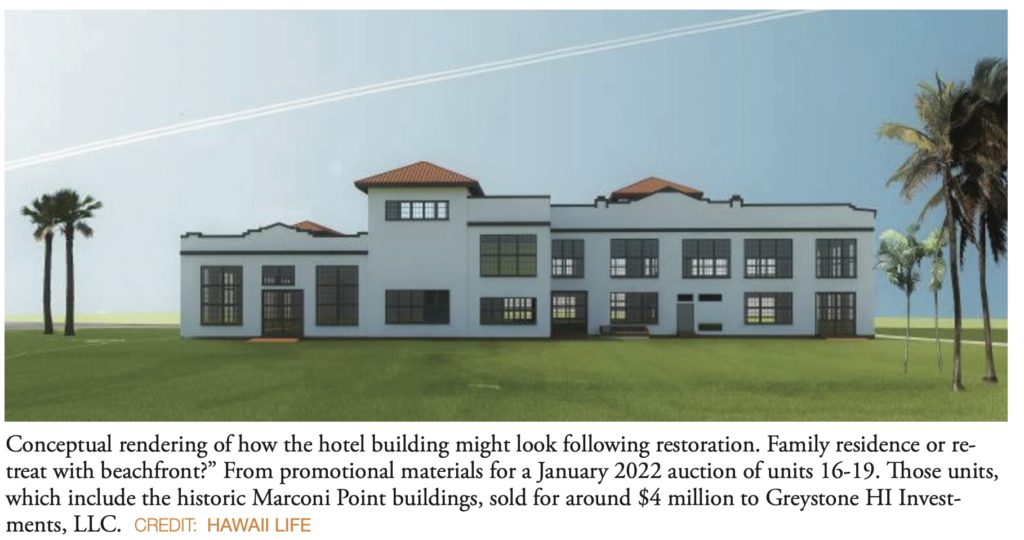
Going Rogue
In Henderson’s complaint, his attorneys argue that his companies are entitled to a declaration that the DPP violated their rights and to an injunction and relief ordering the agency to approve ministerial building permits and the subdivision applications for the roadway and the agricultural subdivision.
While he appears to be doing everything he can to avoid having to obtain an SMA permit, a consultant for the owner of Unit 1, which is one of the few that are allowed a farm dwelling under the CPR declarations, has filed a SMA-Major permit application with the DPP for Lot 160-B.
Lot 160-B is one of the five lots that make up the Marconi Point lands. It encompasses 74 acres along the shoreline.
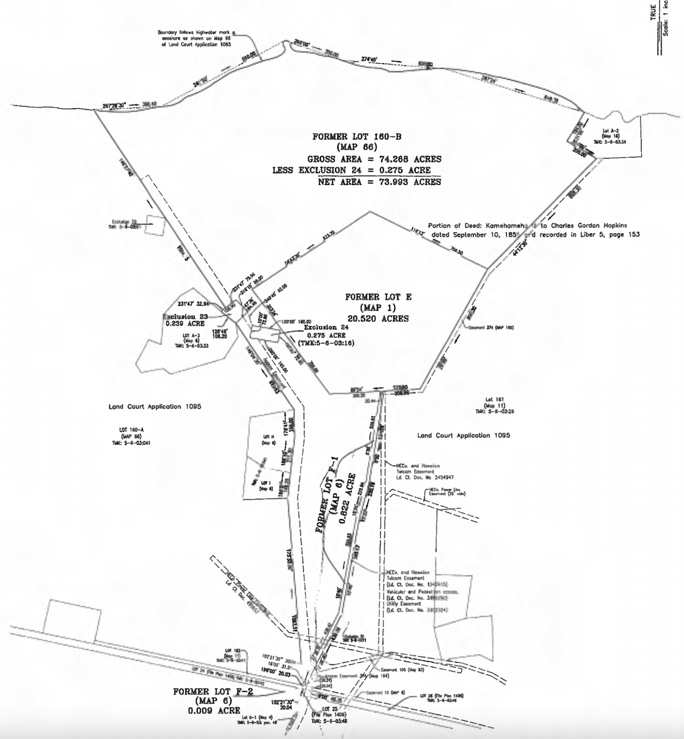
Mark Howland of WHALE Environmental Services, LLC, has been assisting Unit 1 owner Yue-Sai Kan in her efforts to build a farm dwelling on her four-acre oceanfront lot, which she bought from Marconi Farms for $3.6 million.
Her building permit application as well as her exemption for an agricultural structure she built without permits that incurred a violation have been stalled pending the resolution of SMA issues.
Howland serves on the Honolulu Authority for Rapid Transportation board along with current DPP director Dawn Apuna. He says that the DPP “asked if we could clean up this mess.”
Because the permit application covers only Lot 160-B, which includes oceanfront units 1-6, 16-19, and 28-32, as well the mauka units 7-9, “it only takes care of part of the mess,” he added. The permit application is filed on behalf of the Marconi Point Condominiums.
Howland says that under the Honolulu City Council’s Bill 42, which the mayor signed in March, an SMA major permit may be obtained for one-family and two-family detached dwellings on a single zoning lot without having to conduct an environmental assessment or impact statement first. Under the CPR covenant, he says, only units 1 and 5 within Lot 160-B can have farm dwellings.
How this permit application affects Henderson’s lawsuit against the city is unclear. The attorney who signed the complaint, Ross Uehara-Tilton, did not respond to questions by press time.
— Teresa Dawson

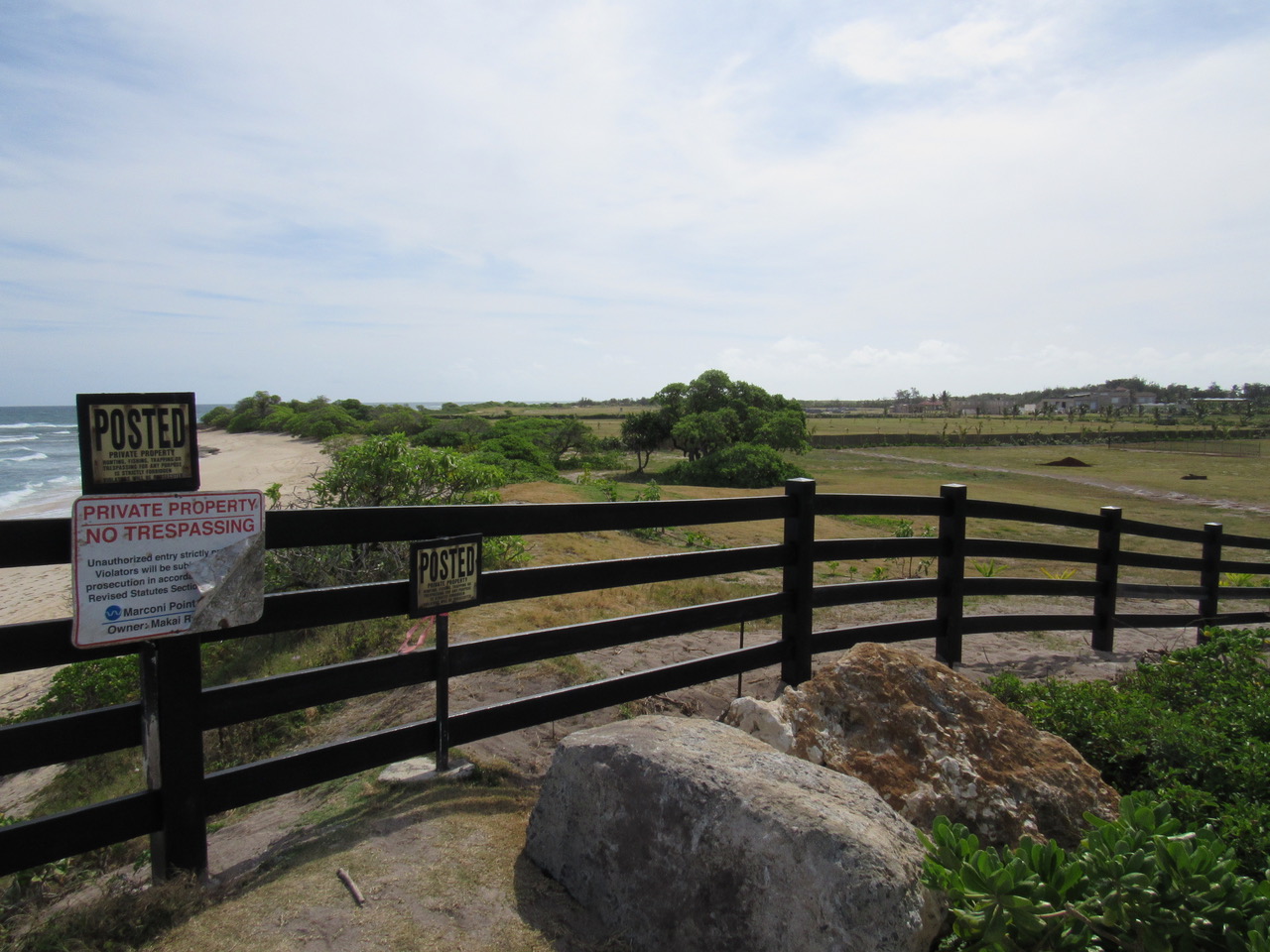
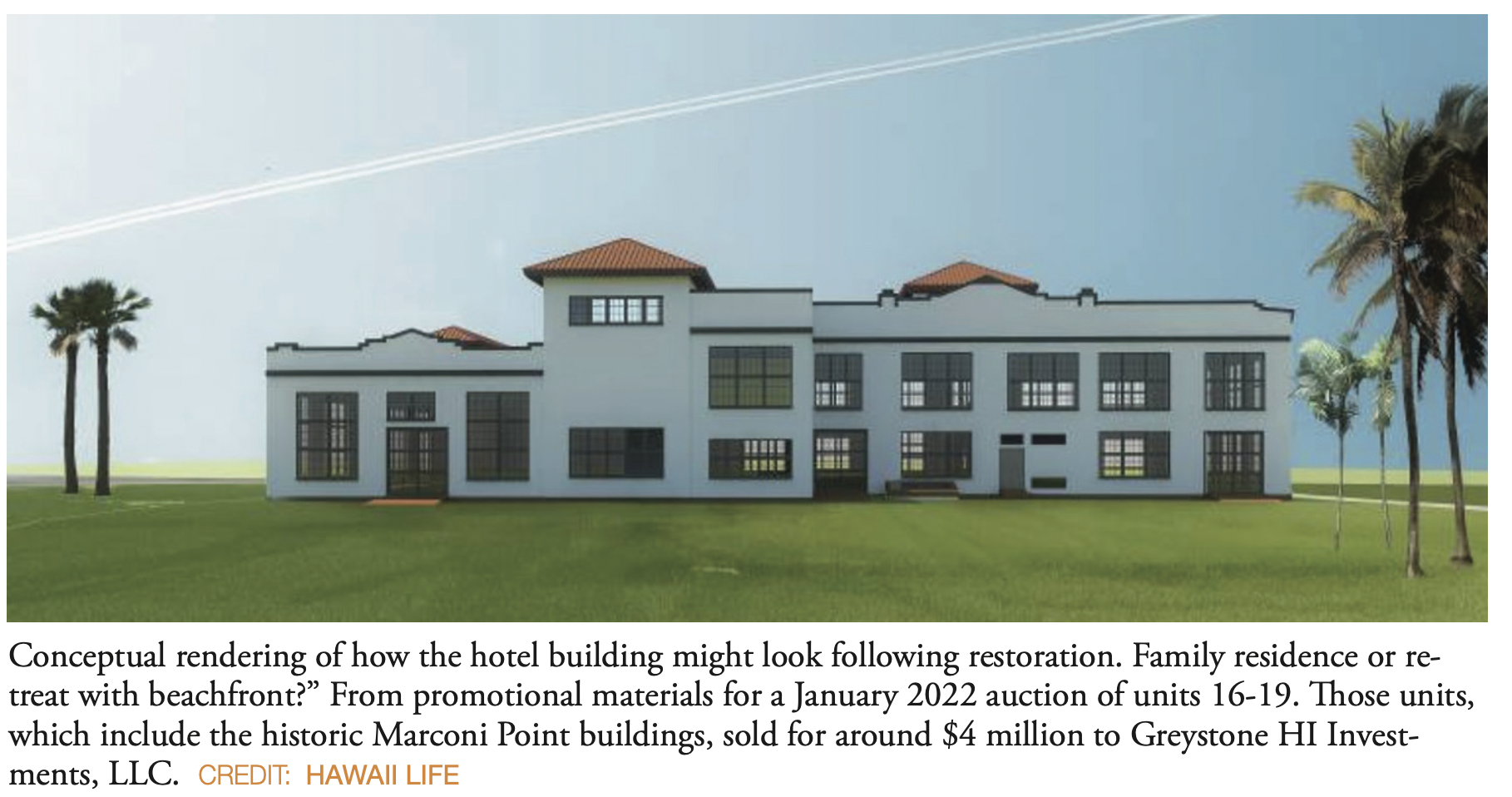
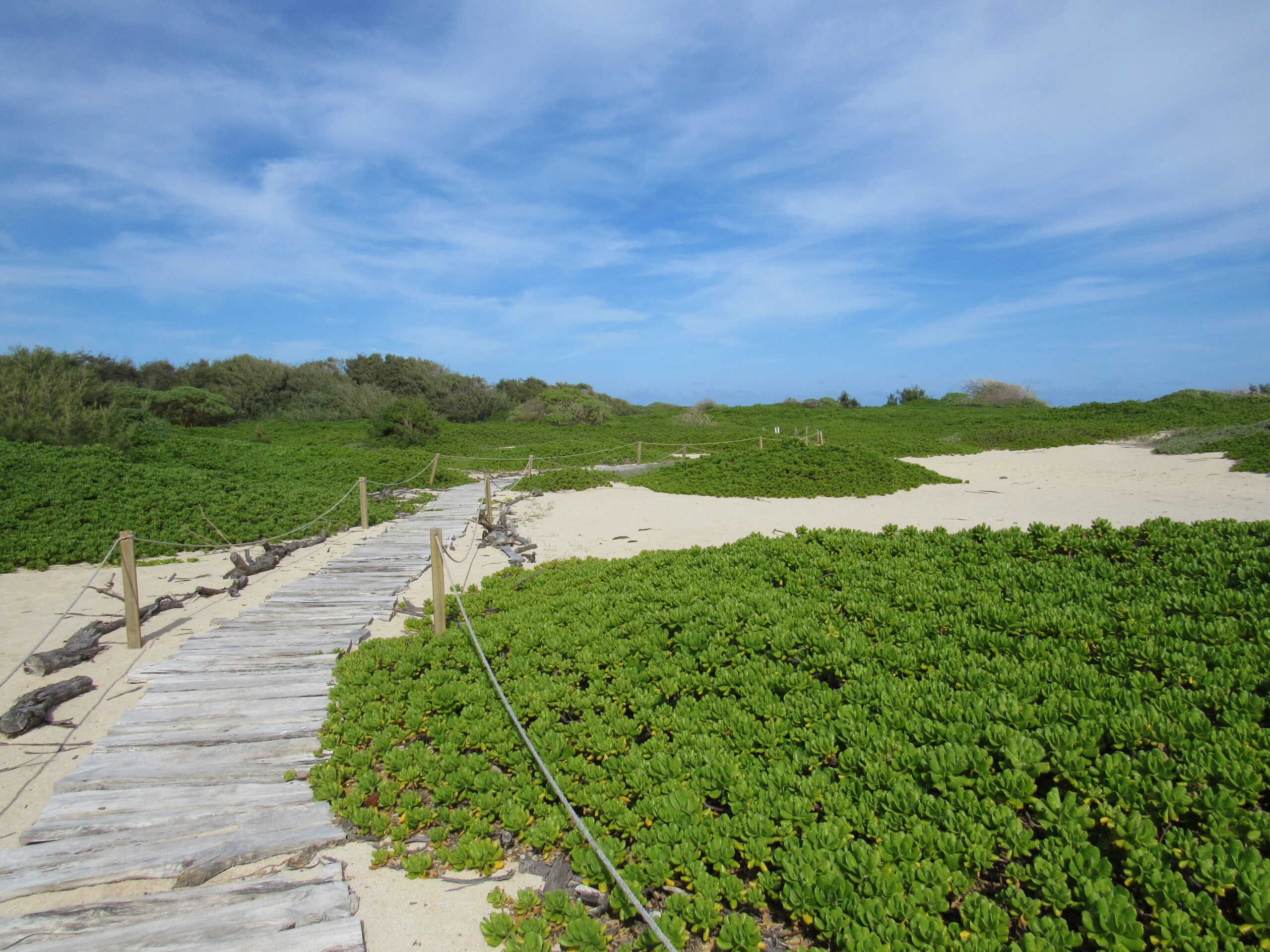
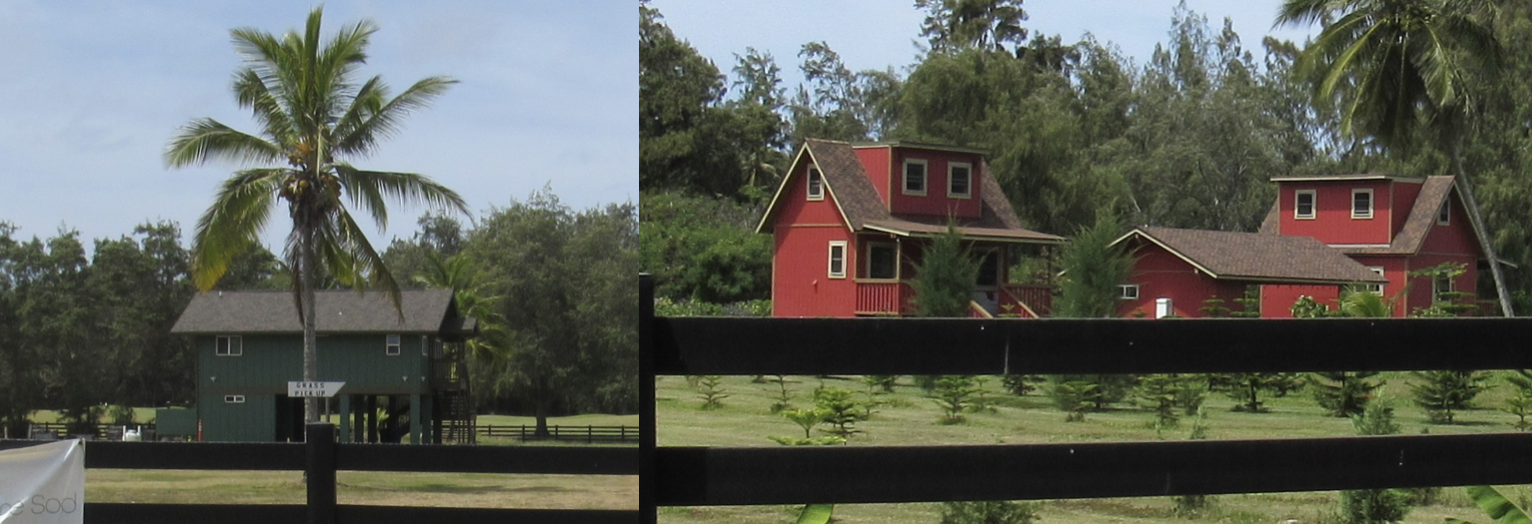
Leave a Reply